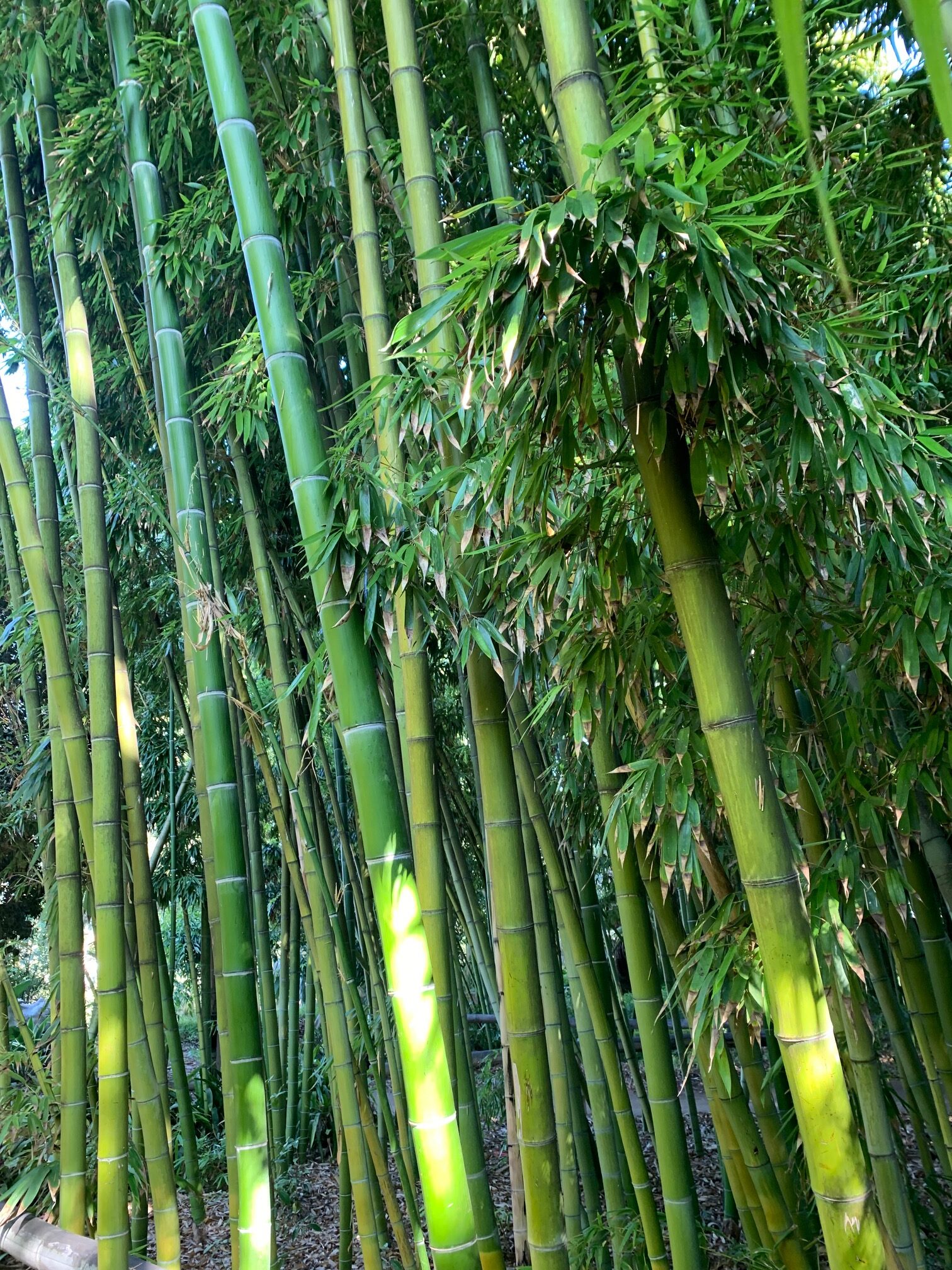
Bamboo
Bambusoideae
Basic Information
🌿 Family: Poaceae🗺️ Zone: 5-10
Other Names:
- Giant Grass
🌡️ Ideal Temperature : 65°F – 95°F
🔥 Heat Tolerance: Up to 100°F
❄️ Cold Tolerance: Down to -20°F
🌱 Type: Perennial
Layers
- Canopy
- Understory
Functions
- Edible
- Medicinal
- Wildlife Attractor
- Erosion Control
- Windbreaker
- Border Plant
- Ground Cover
- Biofuel
Pests
No pests associated with this plant.
Companions
- Fern
- Hostas
- Hydrangea
Plants to Avoid
- Tomato
- Pepper
Description
Bamboo is a diverse group of perennial evergreen plants in the grass family Poaceae. Characterized by their woody, hollow stems known as culms, bamboos can vary significantly in size, from small ground covers to towering giants reaching over 30 meters (98 feet) in height. Notably, certain bamboo species are among the fastest-growing plants on Earth, with recorded growth rates of up to 91 centimeters (36 inches) in a single day. Bamboo thrives in a range of climates, predominantly in zones 5 through 10. It prefers full sun to partial shade and requires moderate water, with well-draining soil to prevent root rot. Unique among grasses, bamboo's extensive rhizome network allows it to stabilize soil effectively, making it valuable for erosion control.
✂️🫘 Methods to Propagate:
Bamboo primarily propagates through division of rhizomes. The best time to divide bamboo is during the early spring before the shooting season begins. Carefully dig up a section of the clump, ensuring it has at least two culms and a healthy portion of the rhizome system. Replant immediately at the same depth in prepared soil.
🌞💧 Sun and Water Requirements:
Bamboo flourishes in full sun but can tolerate partial shade. It requires consistent moisture, especially during the growing season, but it's crucial to avoid waterlogged conditions. Mulching around the base helps retain soil moisture and regulate temperature.
🧑🌾👩🌾 When to Harvest:
Harvesting bamboo culms is best done during the cooler months when the plant's growth has slowed, typically in late autumn to early winter. Select culms that are at least three years old for optimal strength and durability.
Purpose
In permaculture, bamboo serves multiple functions:
- **Edible:** Young bamboo shoots are a nutritious food source rich in vitamins and minerals.
- **Medicinal:** Traditional medicine systems have utilized various parts of the bamboo plant for their purported anti-inflammatory and antimicrobial properties.
- **Wildlife Attractor:** Bamboo groves provide habitat and food for various wildlife, including birds and small mammals.
- **Erosion Control:** The dense root system of bamboo stabilizes soil, preventing erosion on slopes and riverbanks.
- **Windbreaker:** Tall bamboo species act as effective windbreaks, protecting other plants and structures.
- **Border Plant:** Bamboo can be used to create natural fences or privacy screens due to its dense growth habit.
- **Ground Cover:** Smaller bamboo species serve as ground cover, suppressing weeds and retaining soil moisture.
- **Biofuel:** Fast-growing biomass producer, used for biochar and bioethanol.